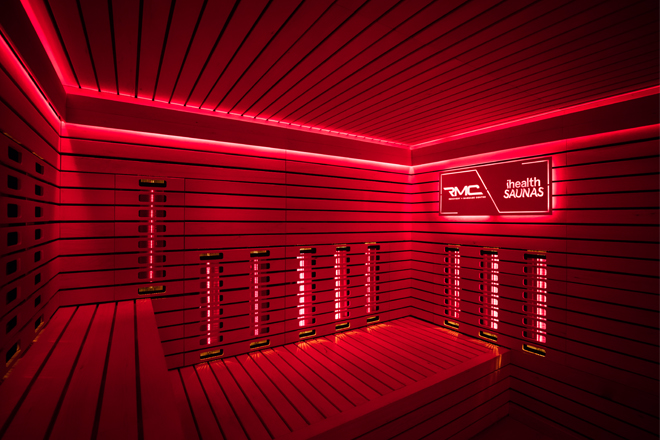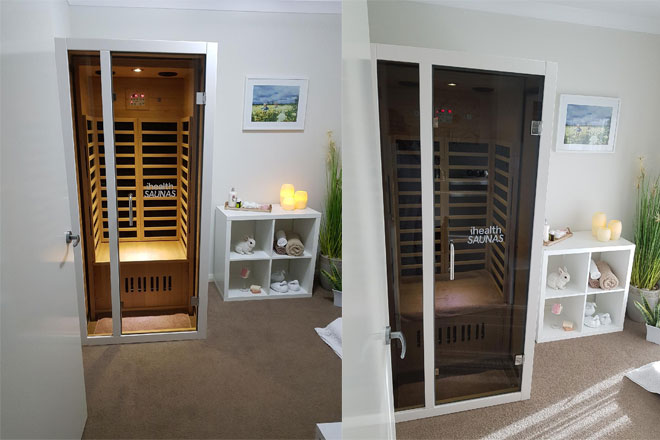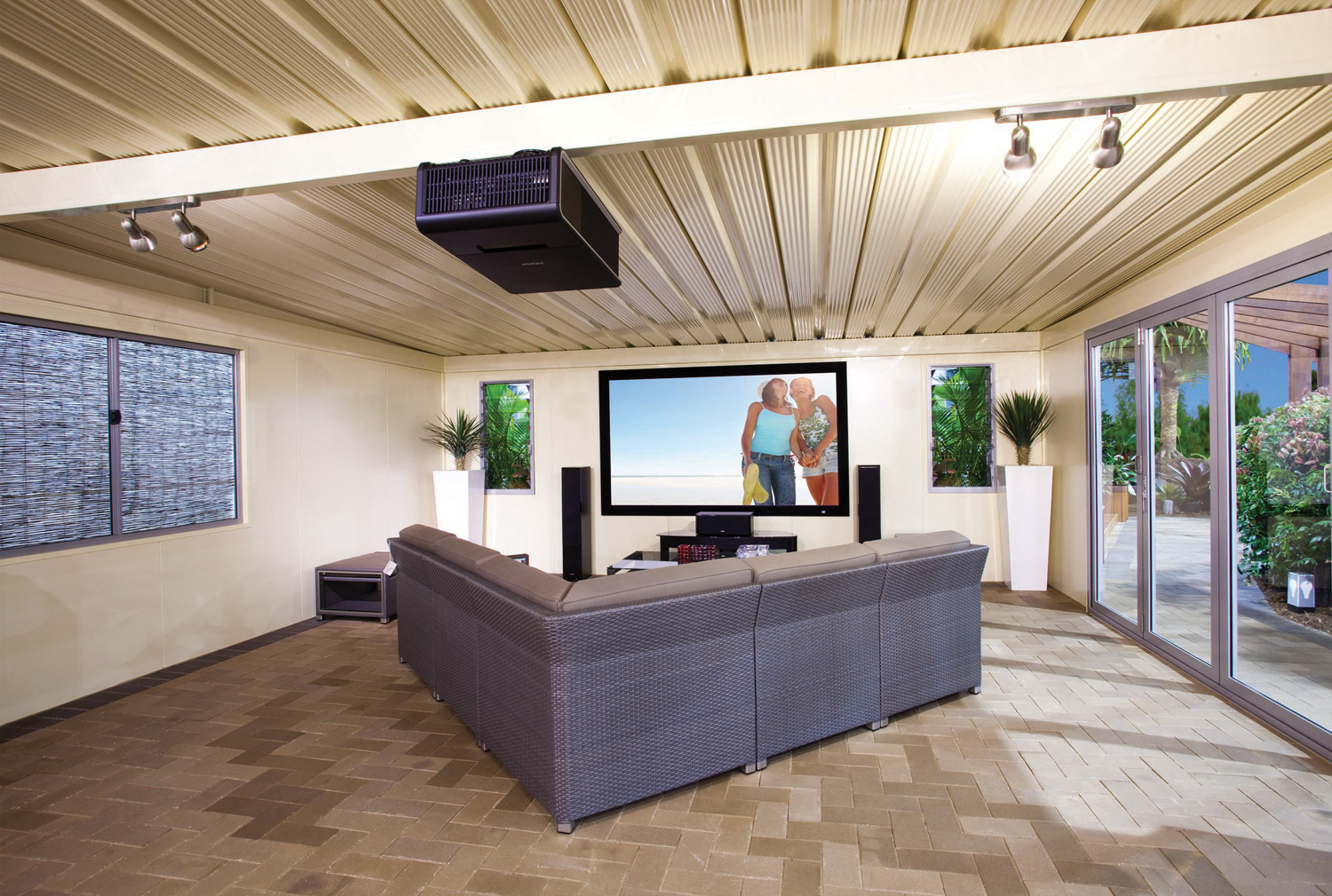In traditional saunas, the heat is generated from rocks, which are heated using electric coils underneath them. Once the rocks get hot, the room is heated as air molecules meet the surface of the hot rocks – this is called conduction. It’s the simplest form of heat transfer, but it’s also the most inefficient. This is why traditional saunas cost a fortune to run, and heating takes time.
Once the rocks are heated, often water is poured over them to add humidity to the sauna. This is a very ineffective way of heating the body, as the heat only creates a surface sweat to the body. Traditional saunas need to be incredibly hot to transfer the heat, often resulting in discomfort and inability to breathe properly. When a sauna reaches these high temperatures, the body goes into survival mode, putting stress on the cardiovascular system and your blood pressure.
So how is an infrared sauna different?
Electricity is run through heaters on the wall, which through the resistance of the heater itself, increases the surface temperature. Once the heater reaches a certain temperature, the light which we perceive as heat, is infrared heat. This heat, interacts with the body directly, to create a cardiovascular workout on the body, whilst removing heavy metals and toxins from deep within the skin.
An infrared sauna heats the body directly, wasting much less energy than a traditional sauna, which only heats the air. Since you are being heated more deeply, the infrared sauna can work at a much lower, more comfortable temperature than the traditional sauna, allowing your body to naturally cool itself.
An infrared sauna can be used every day, and is the most powerful health product on the market now.
iHealth Saunas offer custom solutions including brass fittings, Canadian hemlock timber, music and colour therapy options as well as converting older steam rooms into the latest technology infrared saunas.
For more information














